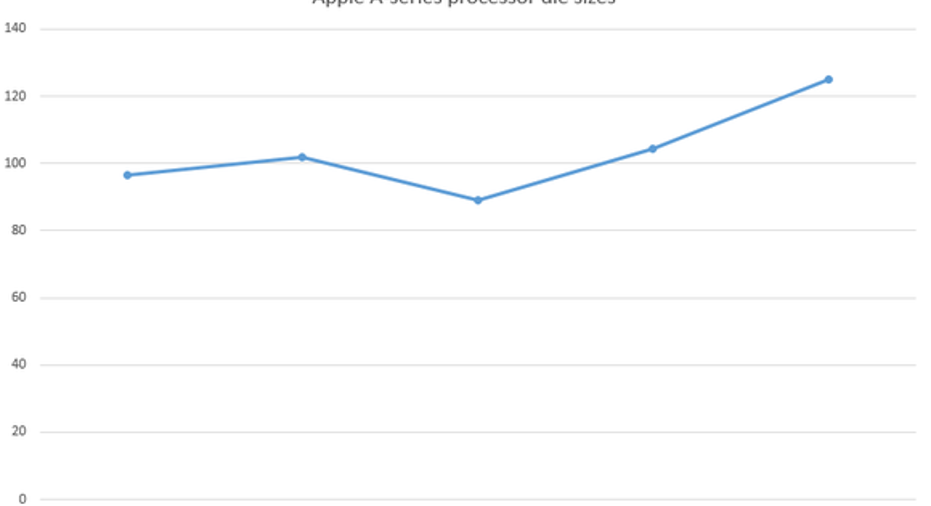Major Apple Inc. Supplier Details New Chip Tech

Taiwan Semiconductor Manufacturing Company (NYSE: TSM) scored a major win in 2014 when Apple (NASDAQ: AAPL) began relying exclusively on the chip giant for the manufacture of its A8 and A8X applications processors. TSMC suffered a bit of a setback vis-a-vis Apple when it wound up splitting the A9 chip manufacturing contract with Samsung (NASDAQOTH: SSNLF), though the company is believed to have secured all the orders for the A10 chip that powers this year's iPhone 7 and iPhone 7 Plus.
Image source: Apple.
Revenue from Apple represents a significant portion of TSMC's business, so the chipmaker is likely very motivated to develop and release compelling new manufacturing technologies at a rapid clip to keep Apple's business.
Apple's upcoming A11 is expected to be manufactured in TSMC's 10-nanometer chip manufacturing technology, and the company's statements strongly suggest that it will be using TSMC's follow-on 7-nanometer technology to build the A12.
TSMC recently detailed that 7-nanometer tech. Let's take a closer look at it to understand what kinds of performance and power enhancements Apple can potentially bring to the A12.
Honey, I shrunk the chip!
TSMC says that its 7-nanometer technology can provide more than 3.3 times the routed gate density of its prior-generation 16-nanometer technology (used to build Apple's A9, A9X, and A10 chips).This means that functionality that required a chip area of 100 square millimeters when manufactured in the 16-nanometer technology could be done in just a hair over 30 square millimeters using this new 7-nanometer technology.
What Apple has tended to do is keep its chip sizes roughly flat generation over generation, using the increased density to cram more functionality and features into a given area.
Data source: Wikipedia.
Apple was forced to use manufacturing technologies that offered roughly the same density for three generations (TSMC's 16-nanometer technology didn't offer a significant area reduction over its 20-nanometer technology; it was primarily a performance improvement), which led to some die size growth over the last three years.
Since the 7-nanometer technology gives a huge area reduction over the 16-nanometer technology, Apple can could conceivably pack in more than three times the "stuff" that the A9 chip had while still achieving a die size of approximately 100 square millimeters.
What "stuff" could Apple put in?
With the A8 chip, Apple used a quad-core graphics processor. The A9 and the A10 each used six core graphics processors. I suspect that the move to 10 nanometer for the A11 and then to 7 nanometer for the A12 will allow Apple to get much more aggressive about increasing the graphics core count (and thus graphics performance) of its next two iPhone models.
Apple would also have more real estate to bulk up the sizes of the other key functional blocks on the chip (i.e., image signal processor, CPU, memory controller) to improve performance.
Beyond the area shrink
TSMC says that its 7-nanometer process can deliver up to 40% better performance at the same power as its 16-nanometer technology or up to 65% lower power at the same performance level.
Image source: TSMC paper.
Apple's A10 has two "high-performance" processor cores and two "high-efficiency" cores and the chip can switch between them based on the workload that the chip is required to run.
I suspect that Apple will take full advantage of the two "extremes" outlined here. The high-performance cores could get a 40% boost in frequency relative to what was possible on the A10, while the high-efficiency cores could see a significant power reduction while keeping performance flat to slightly up.
The future looks bright for Apple's A series
Although Apple's A10 chip is blazing fast today, advancements in chip manufacturing technology coupled with architectural innovations should allow Apple to make the A10 look "slow" within a couple of years.
Of course, app developers and Apple itself will have to find ways to take full advantage of all that computing power (it's unlikely that the A10 is being used to its full potential in most apps today), but at least the hardware will be there.
10 stocks we like better than Apple When investing geniuses David and Tom Gardner have a stock tip, it can pay to listen. After all, the newsletter they have run for over a decade, Motley Fool Stock Advisor, has tripled the market.*
David and Tom just revealed what they believe are the 10 best stocks for investors to buy right now... and Apple wasn't one of them! That's right -- they think these 10 stocks are even better buys.
Click here to learn about these picks!
*Stock Advisor returns as of Nov. 7, 2016
Ashraf Eassa has no position in any stocks mentioned. The Motley Fool owns shares of and recommends Apple. The Motley Fool has the following options: long January 2018 $90 calls on Apple and short January 2018 $95 calls on Apple. Try any of our Foolish newsletter services free for 30 days. We Fools may not all hold the same opinions, but we all believe that considering a diverse range of insights makes us better investors. The Motley Fool has a disclosure policy.



















